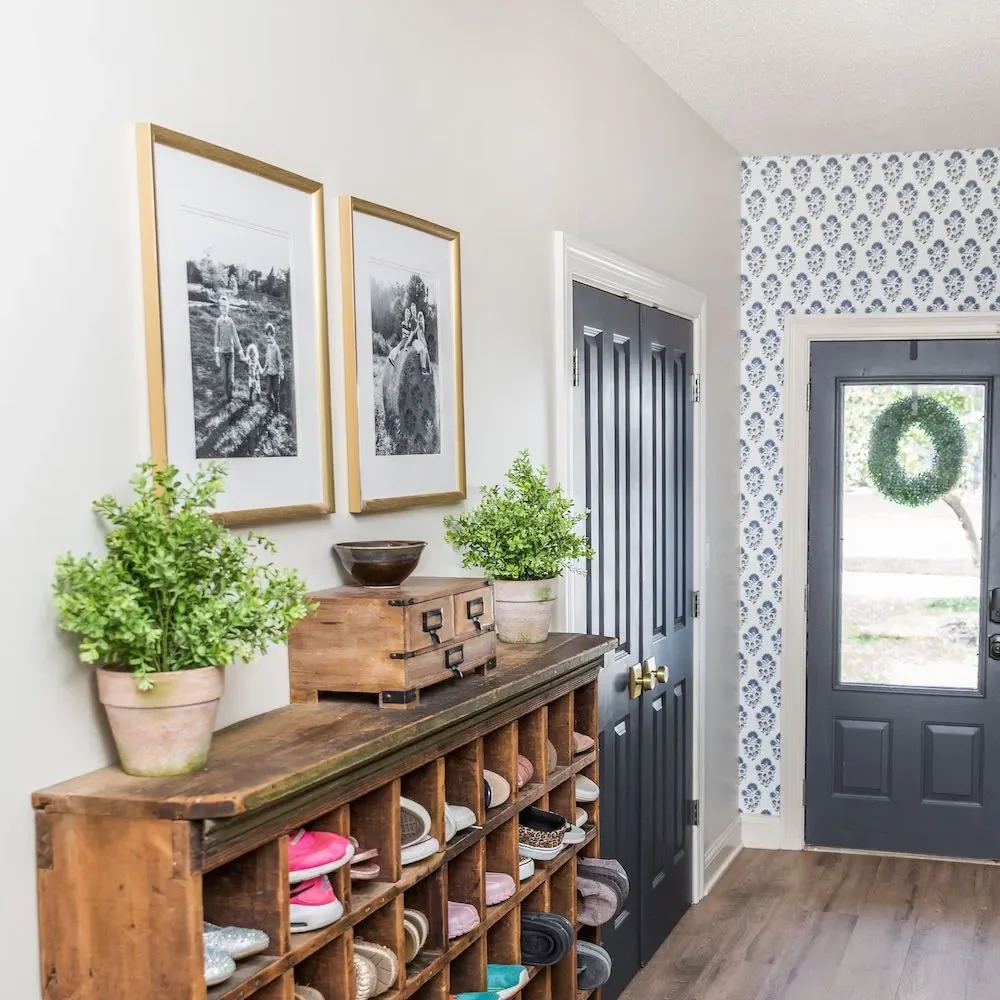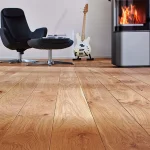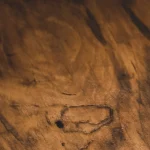- November 6, 2024
Choosing the right flooring for your mudroom is crucial for functionality and style. The mudroom is the gateway between your home and the outdoors. It endures heavy foot traffic, moisture, and dirt. Selecting a flooring option is essential. It should combine durability, ease of maintenance, and aesthetic appeal. In this guide, we’ll delve into expert tips from contractors to help you make an informed decision.
We’ll explore various flooring materials suited for high-traffic and high-moisture environments. These include tiles, vinyl, engineered wood, laminate, and natural stone. Each option has unique benefits and drawbacks. Understanding these will help you select the best fit for your needs.
Beyond material selection, we’ll provide insights on proper installation techniques. We’ll also cover maintenance practices and common pitfalls to avoid. Whether you’re remodeling your existing mudroom or designing a new one, these expert tips will be valuable. They will help ensure your flooring stands up to daily wear and tear. Additionally, the tips will enhance the overall look of your space.
Why Mudroom Flooring is Important
Mudroom flooring plays a critical role in the functionality of your home. As the main entryway from the outdoors, the mudroom is exposed to constant dirt, moisture, and heavy foot traffic. Choosing the right flooring ensures this space can handle daily wear and tear. It also helps keep your home clean and organized. The right flooring material can withstand the demands of a high-traffic area. It also protects the rest of your home from dirt and water that may be tracked in.
One of the benefits of choosing the right mudroom flooring is easier maintenance. Durable, water-resistant materials like tile, vinyl, or natural stone simplify cleaning. They also prevent long-term damage from moisture or mud. With the proper flooring, you’ll spend less time worrying about stains, scratches, or warping. Instead, you’ll have more time to enjoy the space.
Additionally, the right flooring choice impacts the longevity and durability of your mudroom. Floors that resist moisture and dirt will last longer and require fewer repairs. Investing in the best mudroom flooring keeps your entryway functional. It will last for years to come. It will be easy to maintain and visually appealing. This investment will also increase the value and practicality of your home.
Types of Mudroom Flooring
There are several materials suitable for mudrooms, each with unique benefits.
- Tiles are a popular choice due to their durability and water resistance. Ceramic or porcelain tiles are easy to clean and handle the moisture and dirt common in mudrooms. Their variety of styles also allows for more design flexibility.
- Vinyl flooring is another excellent option. It’s water-resistant, durable, and low-maintenance. It is ideal for high-traffic areas like mudrooms. Vinyl comes in many patterns, mimicking wood or stone for a more polished look without the high cost.
- Engineered wood offers a stylish, natural look. It has more resistance to moisture than solid hardwood. This type of flooring can bring warmth and sophistication to a mudroom. It can also handle the demands of daily use. However, it may need more care in wet environments.
- Laminate is a budget-friendly option that can mimic the look of wood or tile. It’s not as water-resistant as other materials. However, newer laminate products offer better moisture protection. It makes them a viable choice for mudrooms.
- Natural stone flooring, such as slate or travertine, provides an upscale, durable option. Stone is highly resistant to moisture and heavy traffic. However, it may require sealing to prevent staining. Stone is also generally more expensive.
Each of these flooring options offers unique advantages. So, choosing the right one depends on your style preferences, budget, and how much moisture your mudroom will face.
Selecting the Best Flooring Material for Your Mudroom
Selecting the best flooring material for your mudroom involves considering several factors. You need to ensure it meets both functional and aesthetic needs. A mudroom serves as the transition area between the outdoors and your home. It means it’s exposed to high traffic, moisture, and dirt. Therefore, the ideal flooring should be durable and easy to maintain. It must also handle the specific demands of this space.
Durability
Durability is a key factor. Given the high foot traffic that mudrooms experience, flooring materials need to withstand constant use. They should be durable and able to handle daily wear and tear. They should not show signs of wear and tear. Ceramic or porcelain tiles are excellent choices. These materials are incredibly durable and resistant to scratches, dents, and stains.
They also offer the advantage of being waterproof. It is crucial in a space that deals with wet shoes and boots. Vinyl flooring is a good option for those looking for a less rigid surface. It is highly durable and can mimic the appearance of more expensive materials like wood or stone. Vinyl is also more resilient to daily abuse.
2. Moisture resistance
Moisture resistance is another critical consideration. Mudrooms often deal with water from snow, rain, or wet gear. Flooring materials like vinyl and engineered wood offer good moisture resistance. However, they vary in their ability to handle prolonged exposure. Vinyl flooring is inherently water-resistant. It is ideal for mudrooms with high moisture levels. Engineered wood offers a natural wood look. It provides better moisture resistance compared to solid wood. However, it may still require periodic sealing to maintain its condition.
3. Ease of maintenance
Ease of maintenance is essential for keeping the mudroom looking clean and fresh. Flooring materials that are easy to clean will save you time and effort in the long run. Tile and vinyl are both excellent choices in this regard. Tiles can be easily wiped down, and spills do not penetrate the surface.
Vinyl flooring is easy to clean and requires minimal upkeep. It’s a practical option for busy households. On the other hand, natural stone and engineered wood may require more maintenance. They might need regular sealing or special cleaning products to preserve their appearance and durability.
4. Aesthetic appeal
Aesthetic appeal also plays a significant role in choosing the right flooring. The mudroom is a part of your home that can set the tone for the rest of your interior spaces. Ceramic tiles and natural stone offer a wide range of styles and finishes. These can range from classic to contemporary. It allows you to match the flooring with your home’s overall design. Vinyl and laminate also offer a variety of looks. They can mimic realistic wood grains or feature sleek modern patterns. Often, these options come at a more budget-friendly price.
5. Budget considerations
Budget considerations will also influence your choice. Natural stone and high-end tiles can be costly. However, options like vinyl and laminate offer affordability. They provide style and functionality without breaking the bank. Balancing your budget with the needs of the space is crucial.
Ultimately, the best flooring material for your mudroom depends on your specific needs and preferences. Your budget is also a key factor. Consider durability, moisture resistance, and ease of maintenance. Aesthetic appeal and cost should also be evaluated. These factors will guide you to the ideal choice.
Installation Tips for Mudroom Flooring
Start by preparing the subfloor, which should be clean, dry, and level. Remove old flooring, debris, or imperfections to create a smooth surface. Use a level to check for evenness and fill any gaps or low spots with a suitable filler.
Next, gather the necessary tools and materials for the installation. Commonly required items include a tape measure, a utility knife, and spacers. You will also need a rubber mallet and a saw for cutting the flooring to size. For specific types of flooring, you may also need an underlayment, adhesive, or grout.
When it comes to installation techniques, follow the manufacturer’s instructions carefully. For tiles, start from the center of the room and work outward. Use spacers to ensure even gaps between tiles. For vinyl and laminate, first acclimate the material to the room’s temperature before installation.
Then, use a recommended adhesive or click-lock system. Ensure all seams are properly sealed, and allow the flooring to set as advised. Following these steps will help you achieve a professional finish.
Maintenance and Care
Maintaining mudroom flooring is essential to ensure its longevity and appearance. Daily upkeep involves sweeping or vacuuming to remove dirt and debris. These particles can scratch the surface over time. Weekly, mop the floor using a cleaner suited for your specific flooring type. For tile, use a pH-neutral cleaner. For vinyl, use a product recommended for that material.
Address spills and stains promptly to prevent damage. For tile and natural stone, blot spills immediately. Clean with appropriate products to avoid staining. For vinyl and laminate, wipe clean with a damp cloth. Avoid excessive water that might seep into seams.
For long-term care, regularly inspect the flooring for signs of wear or damage. For grout on tile or stone, consider periodic sealing. It helps protect against moisture and stains. Engineered wood may benefit from occasional refinishing to maintain its finish and resilience. Laminate flooring should be kept free from excessive moisture and debris. It prevents warping or scratches.
Common Mistakes to Avoid
One common mistake in mudroom flooring is skipping subfloor preparation. Properly preparing the subfloor is crucial. It ensures a smooth foundation for the new flooring. This preparation helps create a stable surface. Failure to do so can lead to uneven surfaces and premature wear.
Another mistake is using inappropriate cleaners. For instance, using harsh chemicals on vinyl or laminate can cause damage. It’s important to use the cleaners recommended for each flooring type.
Another frequent error is ignoring proper sealing. Sealing protects against moisture and stains. It is particularly important for grout in tile or natural stone. Without it, the flooring may become susceptible to damage and deterioration over time.
Ready to get started with your home renovation? Contact us, and our professionals will love to help you with your choice and price estimate.




